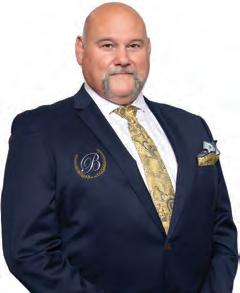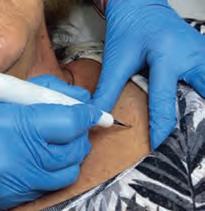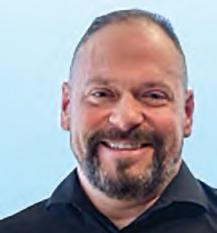
5 minute read
For What It’s Worth
It appears that my last two columns regarding the di culty which many patients are facing when attempting to make an appointment with their physician, or attempting to get someone to call them back regarding their medical issues, from doctors who are employed by the large hospital(s) in our communities have struck a nerve. I am used to receiving responses (thank you very much) from some of my articles, but never have I received so many at one time, and they keep coming. I thought this was a big problem for me personally, but apparently, it is an even larger problem than I thought. e emails that I have received are upsetting and at times heartbreaking. Elderly people without a doctor, when their physician of many years suddenly takes a leave of absence or retires, with no one to replace them. People who have to wait months, some nearly a year, to get on their physician’s schedule for treatment, some without the resources to know where to turn, and without guidance from the very institution with which they placed their trust.
In my opinion, and the opinion of others, the system is broken. We all deserve better than this. When people are sick, when people are hurting, when people expect to be treated, and are turned down, they feel abandoned, lost, bewildered, and angry. What’s worse, many of you have asked me to help. I wish I could, but like you, I don’t know where to turn. Still, since I have some public
by Dr. Melfi, Ph.D.
voice, and a conscience that realizes we all have to do our part to help, I reached out to the hospital to see if they employed a patient advocate who could eld all the calls/complaints and frustrations, and guess what? I found a department that allegedly can help. It is known as the Patient Experience O ce, and the phone number is 772-223-4995. A er two phone calls and several hours later, my call was returned by a very nice woman who was willing to give me the opportunity to voice my concerns. She said she understood the frustration of having to wait for appointments for months, or having a doctor who no longer works there, nor replaced, leaving patients without a physician. She told me her o ce is open to any and all concerns, and she does what she can to allay those concerns, and will contact individual physician o ces to attempt to get earlier appointments.
When I asked her why there is such a long wait to get appointments, even for long-standing patients with doctors of record, she said that with the growth of the community and the large in ux in the population coming to Florida, there are simply not enough doctors to see patients. I nd that answer truthful, but frankly, unacceptable. She also stated that many doctors have le this facility, and have not been replaced, but that they are “working on it.” I don’t doubt what she says is true, but why are doctors’ leaving, and by leaving, I mean leaving our community unattended? Something has to change. is should not be accepted as the new normal. Sick people need to get well, it’s as simple as that. e question is, how can we do that without appointments or physicians? I am all for nurse practitioners. I am a nurse, rst and foremost, but nurses are not doctors, regardless of how intelligent they are (and they are!).
As well, I reminded the woman I spoke with that at the least, the front line of sta workers elding calls should be held to a higher standard of professionalism, by being kind, considerate and courteous, not rude and dismissive, like some of you have encountered. She agreed. So how much can she help? I don’t know, but personally, I still have to wait until the end of August to see my physician, even though I have been a patient of his for the past ten years.
For What It’s Worth, l appreciated her empathy on behalf of all of us, but it didn’t get me into my doctor any sooner. Maybe a few letters to the administration would be the incentive for change. en again, maybe not.
By: Emmelis Keaney

Overoptimism can be as dangerous (or more) as over pessimism, that’s in a nutshell Jerome Powell’s message following the past FOMC meeting, where the Federal Reserve raised interest rates by 0.25 percentage points to 4.75%. While making it clear that the economy is no where near out of danger, the Fed slightly signaled signs of a near future pivot by reducing its .50bps increase rate from last year. Investors should be more cautious than happy. Here is why.
Investors are ignoring many of the indicators and focusing on only one improving aspect of our economy, which is the slight decline in in ation. Others focus on the short-term shi s of the major indexes. Yes, the S&P 500 rose 1% immediately a er the Fed’s announcement. But comments such as “in ation is headed in the right direction”, or “the economy is not as bad as we thought”, that are becoming increasingly common by analysts and even the International Monetary Fund (IMF), create a misleading sense of calm and recovery, when in fact there’s little evidence supporting those assumptions.
e Fed uses the Consumer Price Index (CPI) to measure the changes in prices of purchases for consumption. is measure analyzes 8 sectors: Food & Beverage, Housing, Apparel, Transportation, Medical Care, Recreation, Education & Communication and Other Goods & Services. During the Fed’s announcement, Chair Powell explained that in ation only began to subside in the “Goods & Services” sector, which is only 14% of the entire measurement. Whereas in the other sectors such as Housing, over 40% of the basket, in ation decline has not even begun.
Speaking of the Housing sector, one of the largest homebuilders in the country KB Home, released their end of year earnings disclosing an alarming 68% of home cancellations in 2023. e housing sector is considered a “lagging” indicator, (a measure of the past results). But it can too be consider a “leading” indicator, in the sense that changes in the housing sector can give us some indication of future economic outlook. I don’t believe the housing sector, as well as the Food & Beverage, Apparel and Recreation sectors have experienced the full brunt of interest rate hikes and stubborn in ation.
e stock market is in not a sole reliable measure of our economy, as it’s very re ective of investor sentiment. Changes in the stock market do not signi cantly a ect most of the population, because only about 14% of American families have direct stock investments, according to the Federal Reserve, while 52% have some degree of stock market exposure in their retirement accounts through work. Jerome Powell is not concerned about the stock market, despite Wall Street’s pressures. ere are more concerning economic factors beyond the stock market and ignoring them can be regrettably foolish.





































































































IN EVENT PROGRAM, PRESS RELEASES, SOCIAL MEDIA & WEBSITE, AND OTHER PROMOTIONAL MATERIAL
• 6 PREMIER SEATS TO THE AMETHYST CHARITY BALL
RECOGNITION: COCKTAIL HOUR SIGNAGE AT EVENT, PRESS RELEASES, SOCIAL MEDIA & WEBSITE, AND OTHER PROMOTIONAL MATERIAL
• 4 PREMIER SEATS TO THE AMETHYST CHARITY BALL
RECOGNITION: LISTING IN EVENT PROGRAM, PRESS RELEASES, SOCIAL MEDIA & WEBSITE
• 2 PREMIER SEATS TO THE AMETHYST CHARITY BALL RECOGNITION: LISTING IN EVENT PROGRAM AMETHYST PARTNER $10,000 PURPLE PARTNER $7,500 COCKTAIL RECEPTION PARTNER $5,000 LILAC PARTNER $2,500 FRIENDS OF SAFESPACE $1,000








































By Gabby Gregory


